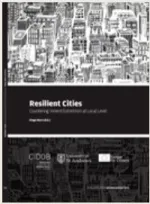What accounts for the rise of violent extremism in european cities?

Since the 1970s, scholars have been trying to identify how and why individuals turn to activism and terrorism. These renewed attempts at answering an old question were heavily induced by the radical-left zeitgeist of the 1960s and its parallel wave of transnational radical-left terrorism. The paradigms of “radicalisation” and “violent extremism” were not yet en vogue. The attacks in Madrid and London in 2004 and 2005 pushed the question once again to the fore. Unlike the perpetrators of 9/11, these attackers did not come from abroad, but were individuals who grew up in Europe and were often born there. How did they come to resort to terrorism and turn against their own countrymen? Why were they attracted by extremist ideologies? What made them vulnerable to recruiters? Something, it was argued, must turn a person from a “normal” individual into a terrorist. A new concept was introduced – radicalisation. This was supposed to be the key to open this “black box”. It soon developed into the holy grail of European (and later worldwide) counterterrorism efforts.